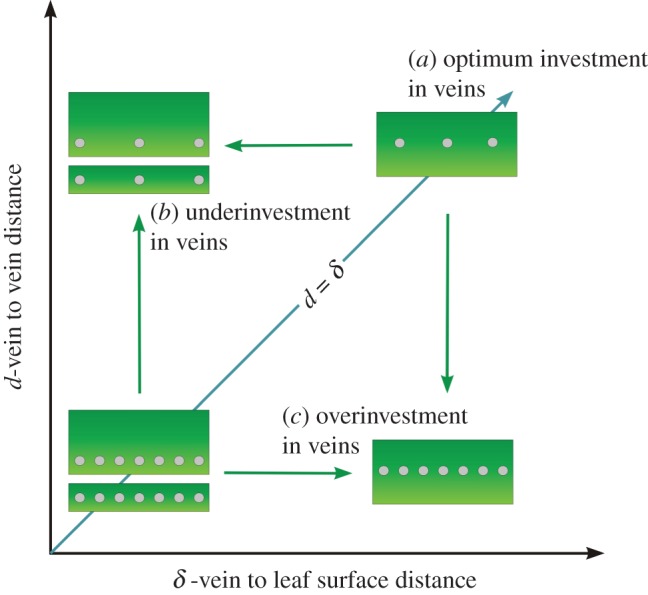Figure 1.

Morphospace of potential vein placement in leaves, shown in cross section. (a) Optimum designs for both thin and thick leaves lie along the line where the distance between veins (d) is equal to the distance from veins to evaporative surface (δ). Note that δ is not equivalent to leaf thickness; thick leaves may have either large or small values for δ depending on how deeply the veins are seated within the leaf away from the evaporative surface. (b) Underinvestment in vein density (VD) characterized by d > δ. (c) Overinvestment in VD where d < δ. Each of these three scenarios has significant physiological implications. In scenario (a) of optimum vein placement, stomata most likely act together, because the leaf surface experiences relatively homogeneous water potential. In scenario (b) of underinvestment in vein density (VD) the leaf would experience non-homogeneous water distribution across its surface that would lead to unevenly distributed stomatal closure with increasing evaporative demand, potentially leading to greater stress related damage in severe cases. Furthermore, overall transpiration capacity in scenario (b) would be less than in scenario (a) even for the same δ. In scenario (c) of overinvestment in VD, there would be no further increase in transpiration rate over scenario (a). The excessive VD would, however, lead to a loss of internal space that could be used for chlorophyll bearing cells and, thus, may result in a decrease in total leaf photosynthetic capacity. (Online version in colour.)
